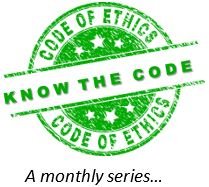You may have seen something new in the County’s budget outreach and other materials – a symbol of the County’s focus on community engagement and our values of integrity, belonging, equity, excellence, access and sustainability. These core components of the General Management System (GMS) are now reflected in a new County logo.
Last year our Chief Administrative Officer assembled a broad team of County employees from across the enterprise to explore strategies to enhance community engagement and access, along with furthering the understanding of what the County does and stands for.
They conducted extensive outreach and focus groups with the community and our employees, including surveys that engaged upward of 800 people, including representatives of nearly 150 organizations across diverse sectors like education, healthcare, private business and others. Thank you to all of the employees and community partners who participated in the process and provided valuable input.
The feedback showed that a new logo and brand should reflect the region’s geographic diversity, the County’s new energy and take inspiration from the County seal and the Live Well San Diego brand.
Throughout the development process, more than 100 logo options were created. Respondents selected a winner whose elements tell a dynamic story about the County and our mission, vision and values. Here are some of the highlights:
The central element of the logo is the iconic downtown San Diego County Administration Center. The building represents the foundation for the myriad of programs provided to those who seek County services.
The blue colors of the sky and curved ocean waves represent open spaces, peace and tranquility, but also symbolize trust and responsibility.
The soaring seagull represents freedom and fearlessness, as a nod to the County’s quest for innovation and resourcefulness.
The orange color of the shoreline wraps around the building to symbolize security, optimism and new energy.
The five green arched rays at the bottom of the logo symbolize hope and opportunity while providing a foundation to the logo that the artist intended to represent each of the County’s five Supervisorial districts.
The green color represents local agriculture, but also growth, self-sufficiency, economic vitality and sustainability while the stripes represent equality across the region.
The logo is meant to complement our County seal which has been in use since 1937. The seal will continue to be used for formal official documents like Board of Supervisors policies, County proclamations and others.
You may have already seen the new logo in use in the County of San Diego’s budget materials, in email signatures, on the County’s official social media accounts and in other places.
The County will formally adopt the logo July 1, when we’ll put out information on County News Center and on our website sharing brand details and guidance externally.
All County business groups, departments and programs will be expected to use the logo in accordance with the brand guidelines by that time. Resources including templates and FAQs for using it are available on the County Communications Office intranet site.
To request a logo or get additional information on branding, communication, community engagement or language services, email communications@sdcounty.ca.gov.





















